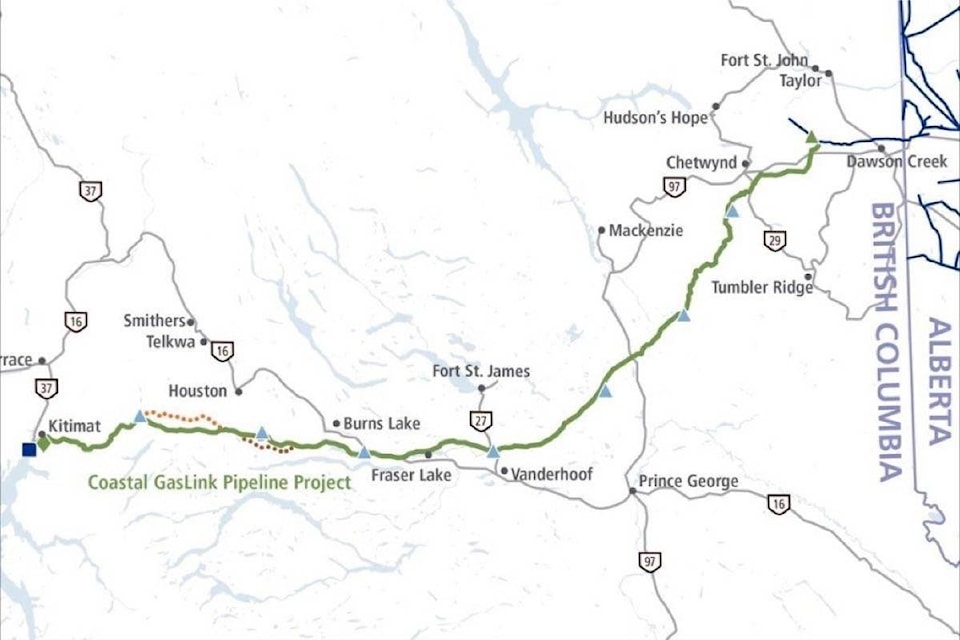TransCanada’s Coastal GasLink LNG pipeline is preparing to set up a work camp near Houston that would accommodate approximately 800 workers to support pipeline construction needs.
The Huckleberry Camp would be located approximately 28 kilometres south of Houston.
According to Jacquelynn Benson, a spokesperson for Coastal GasLink, the Huckleberry Camp will reflect construction workforce standards, including separate quarters for men and women, telecommunications, games rooms, laundry facilities and exercise facilities.
“Some additional services will require workers to travel into Houston occasionally but many of the amenities can be found on site, including camp catering and medical services,” she said. “We are still finalizing all details for the water and waste management process, but those will comply with all regulatory requirements.”
“Coastal GasLink will set out clear rules and guidelines that will be enforced by camp management and by employers.”
Benson said that an estimated 2,000 to 2,500 “high-quality, well-paying jobs” will be created during the four-year construction period for Coastal GasLink across the region. A majority of employment and contracting opportunities will be provided through their so-called prime contractors.
“Once those are selected, we will notify communities and tour the region to promote local contracting and employment,” she said. “We’ve already connected with businesses and individuals at chamber events, business forums, and job fairs across northern B.C.”
Last October, the Regional District of Bulkley-Nechako (RDBN) sent a letter to the B.C. Oil and Gas Commission raising several concerns over the proposed pipeline project. One of these concerns was the fact that Coastal GasLink had made no specific commitments regarding the use of local employment and the provision of apprenticeship positions for local employees.
In a letter recently sent to the RDBN board responding to some of these concerns, Coastal GasLink said that when it comes to local hiring, the company goes “beyond the industry standard.” However, the company still did not specify how many workers would be hired locally.
Last November, Coastal GasLink filed an amendment application to add an alternate route option southeast of Houston. The proposed amendment involves the relocation of a 42-kilometre section of pipeline to a location approximately four kilometres to the south. Coastal GasLink said the proposed alternate route is a potential solution to the feedback received from Indigenous groups in the area.
“After extensive consultation with local communities and Aboriginal groups, the south of Houston alternate route was identified to help minimize potential adverse effects on traditional and cultural land use on a portion of the current route.”
The Coastal GasLink Pipeline project involves the construction and operation of an approximately 650-km natural gas pipeline from near Dawson Creek to near Kitimat. The pipeline proponent received its environmental assessment certificate in October 2014 and has all the major permits it needs to start construction.
Due to the challenges of the current global energy market, LNG Canada announced in July 2016 that their joint venture participants needed more time prior to making a final investment decision on their proposed export facility near Kitimat. As a result, construction of the Coastal GasLink pipeline, which would supply gas to their project, has been delayed.
LNG Canada is expected to make a final investment decision this year.
